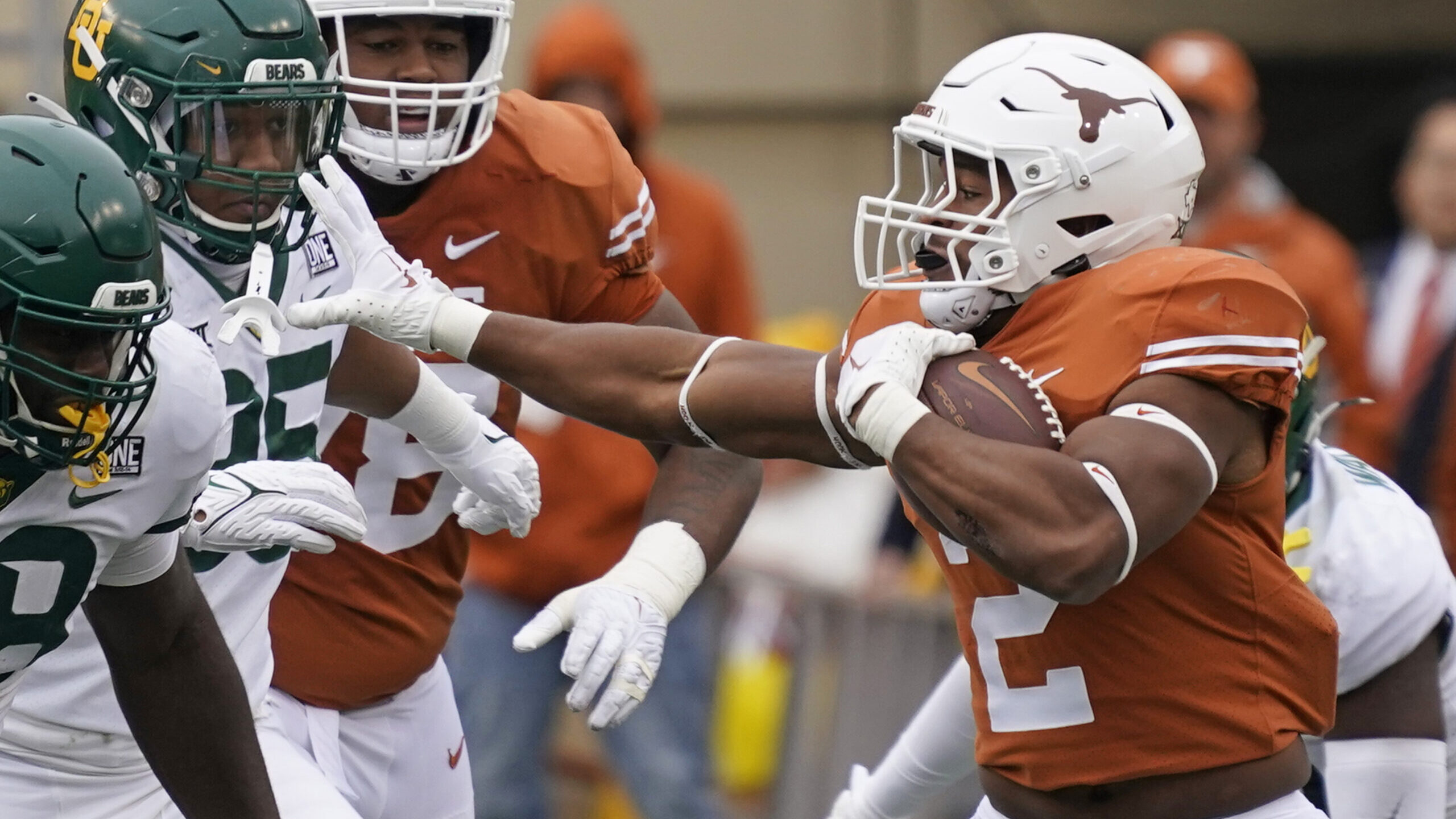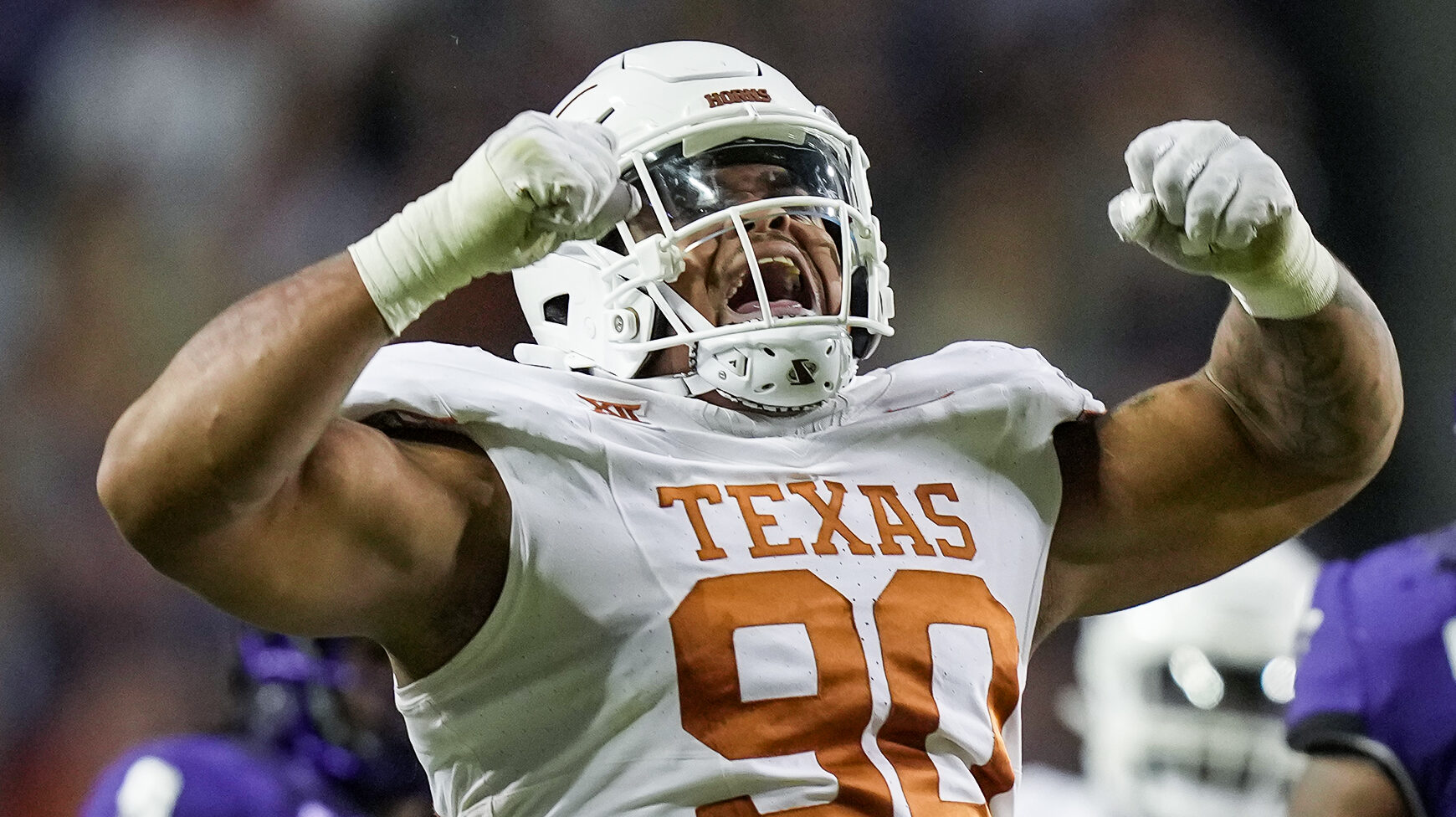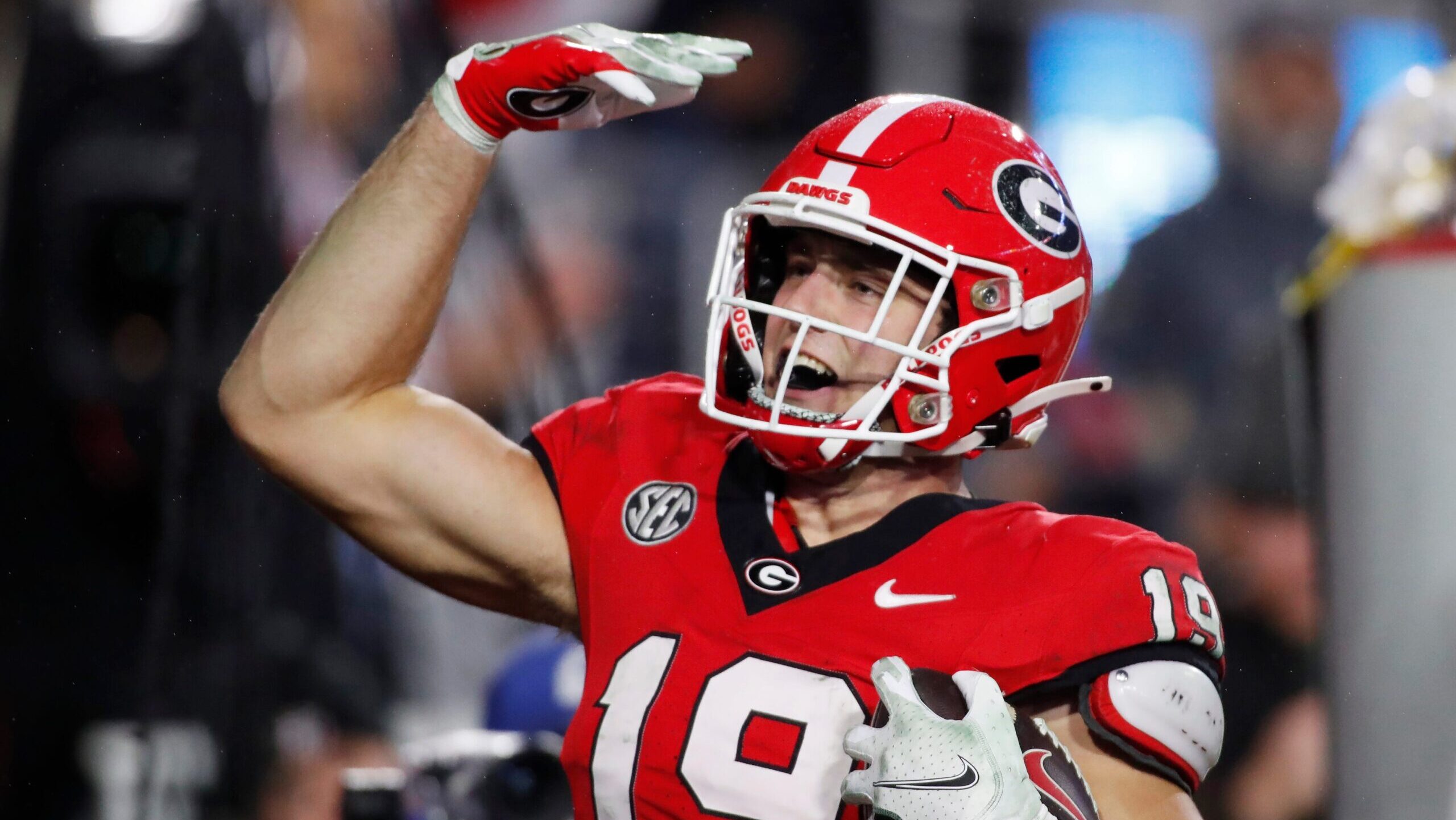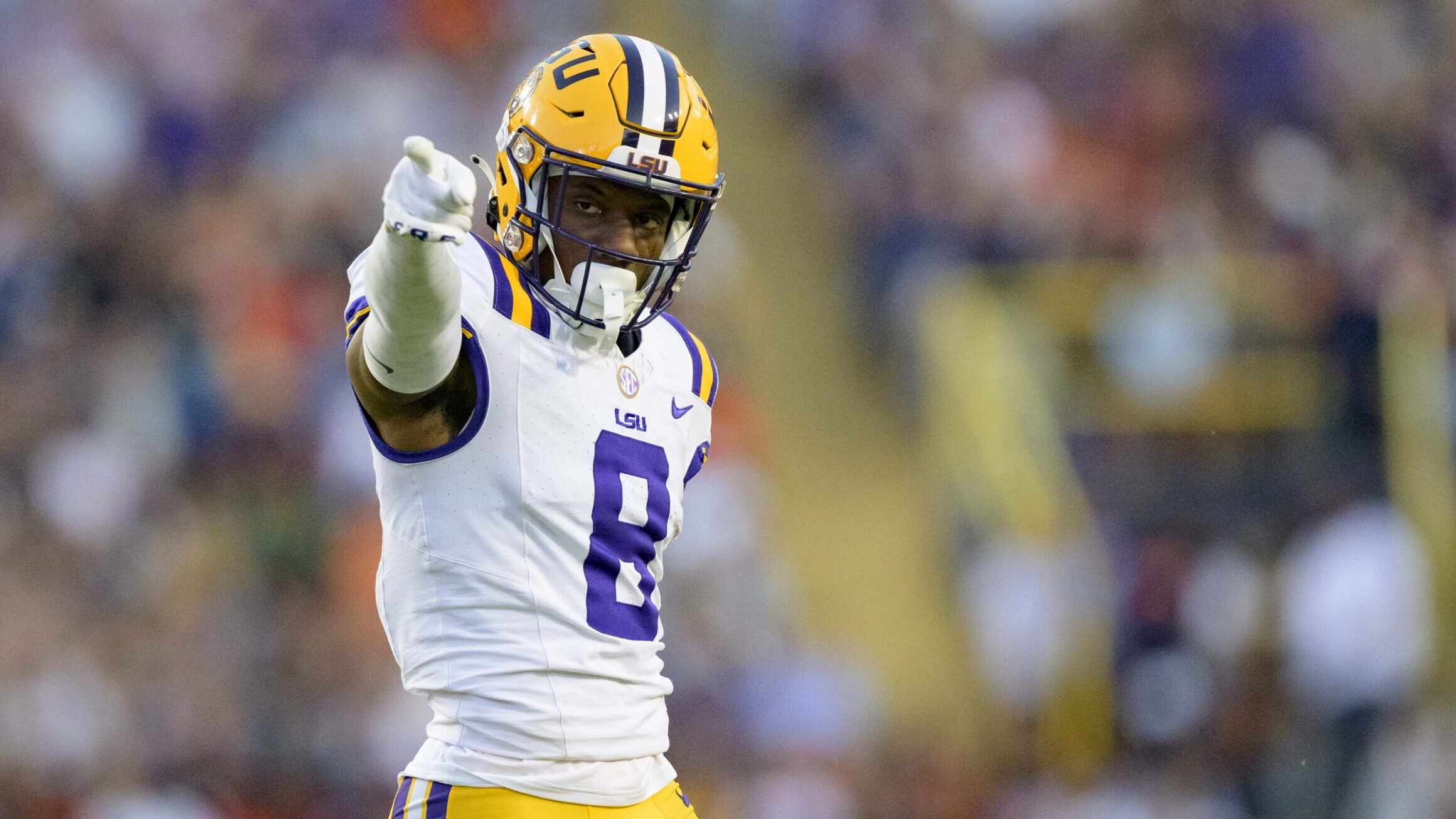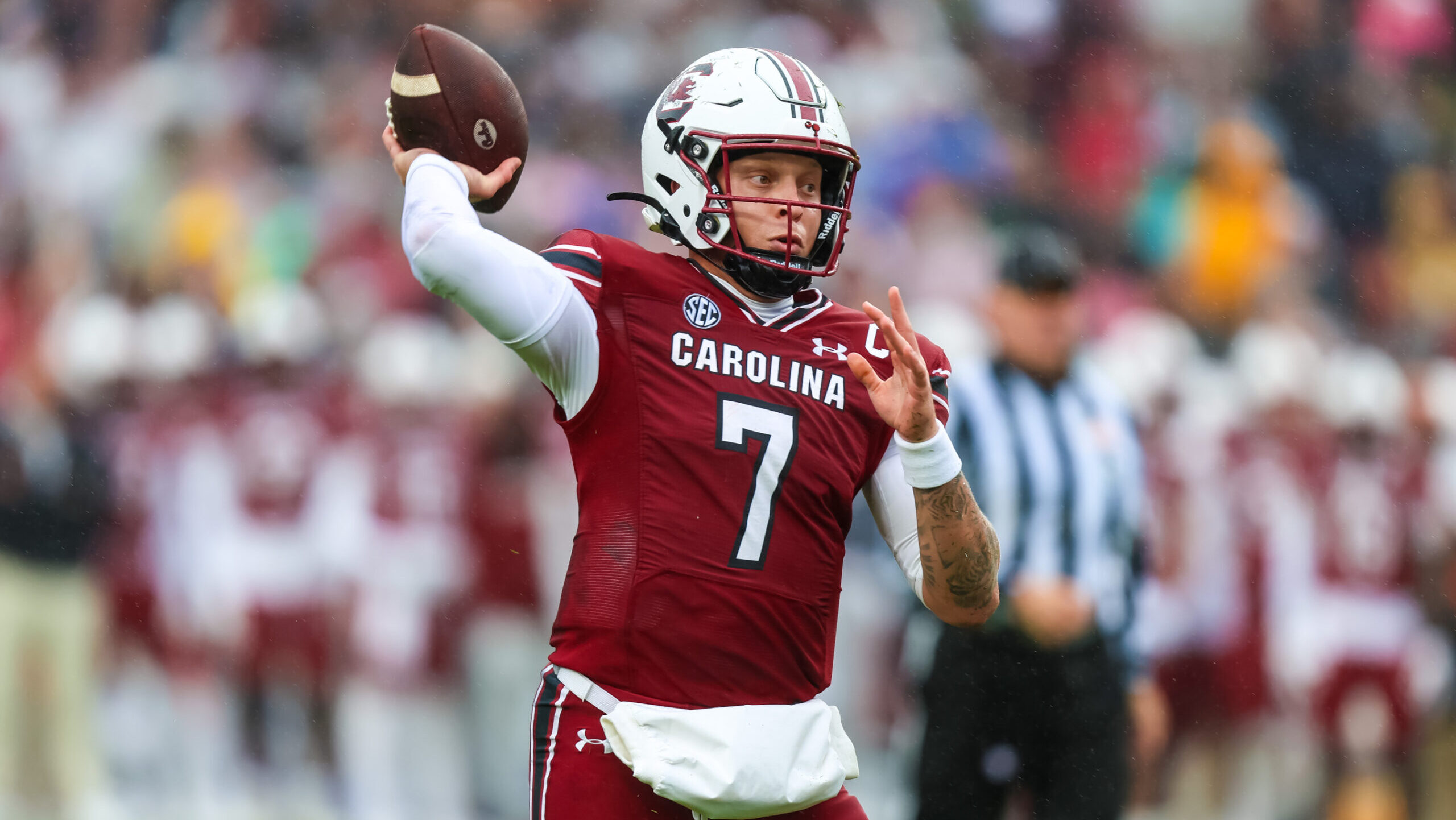Analysis
2/27/23
10 min read
NFL RB Prospect Profiles: 5 Runners With Standout Metrics
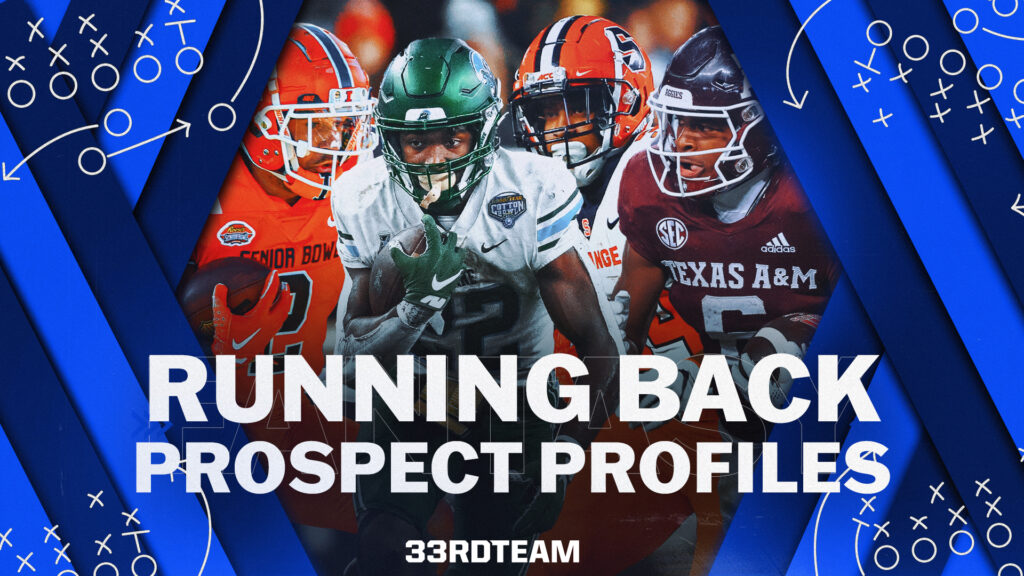
The running back class for the 2023 NFL Draft appears deep after the top two projected prospects in Bijan Robinson (scouting report) and Jahmyr Gibbs (scouting report), according to The 33rd Team Scouting Department's most recent mock draft.
One of the first data sources I lean on when looking at draft-eligible running backs is college production in their final season and career totals. My early process involves sorting through college dominator ratings, plus the rushing and receiving metrics.
>> READ: The 33rd Team's NFL Draft Board
This process allows us to dive deeper into the film and underlying metrics, via Sports Info Solutions, to help with early projection. After the NFL Combine, we'll incorporate the athleticism and workout data to paint a clearer picture. Finally, draft capital matters, of course.
How do these running back prospects compare to past players from a production standpoint? Do they have any standout skills? We hope to answer those questions and more by analyzing the data and film to identify various running back prospect profiles.
Also, take a look at the 2023 Rookie Running Back Best Ball Primer by Josh Larky and Ryan Reynolds and the previous four running back prospect profiles.
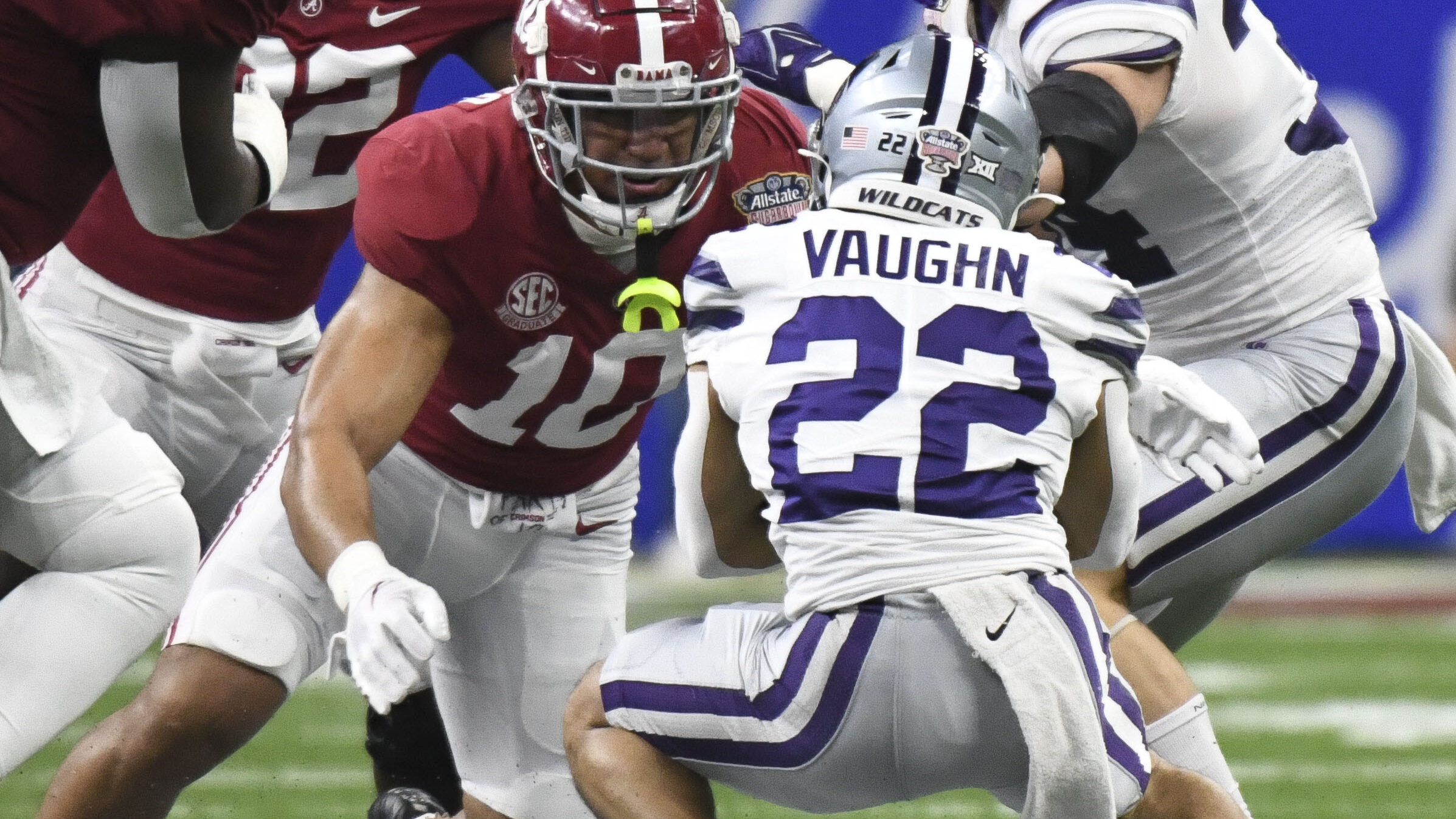
 Deuce Vaughn, RB, Kansas State
Deuce Vaughn, RB, Kansas State
From a production standpoint, Deuce Vaughn compiled more than 3,600 yards and scored 33 rushing touchdowns in his three-year collegiate career. In Vaughn's career, he ranked 112th in yards and 25th in yards receiving. That translated to a career running back dominator of 85% and an elite 17% receiving yardage market share at the position. Vaughn's receiving yards market share (RecYd MS) is tied for ninth-best amongst all college running backs since 2005.
Vaughn's Size Concerns
He checks the volume and production boxes for 2023 running back prospects, but his size remains the top concern. Listed at 5-foot-6 and around 173 pounds, he has a 27.9 body mass index (BMI). If he weighs 175 pounds, it bumps his BMI to 28.2. What if he comes in at 180 pounds? Well, then Vaughn's BMI rises to 29. Below, the table lists current and past running back prospects with a similar BMI.
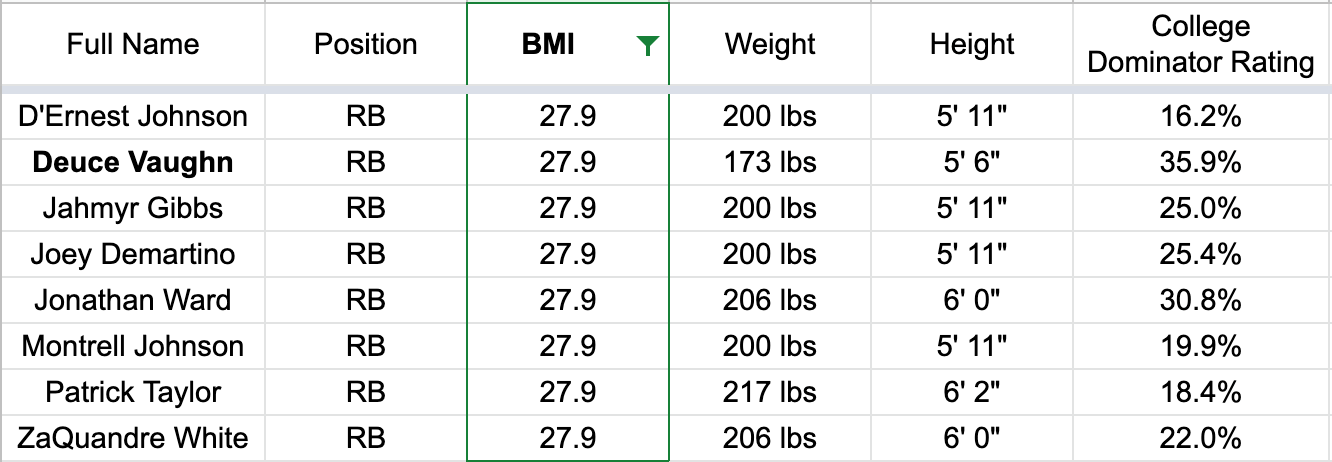
Vaughn's size is an outlier, especially considering his ridiculous amount of college production. Some "close" comparisons based on production and size include LeSean McCoy, Giovani Bernard and Duke Johnson. We're using the term close loosely because Vaughn would be one of the lighter backs to ever enter the NFL, with Donnel Pumphrey at 176 pounds and Noel Devine weighing 179.
One comparison as a shorter back is Darren Sproles, who isn't in the database, but he weighed in at 187 pounds with solid athletic measurables. There's a chance Vaughn's workout numbers make him an enticing athlete at his size.
Vaughn's Advanced Metrics
Vaughn ranked 100th in broken plus missed tackles per attempt (BT+MT/Att) and 67th in using his designed gaps. Using the Sports Info Solutions metric of Points Earned, Vaughn ranked 147th with a -0.022 Points Earned Per Play, which accounted for estimated points added (EPA) on each play.
Without oversimplifying, Vaughn's advanced metrics look mediocre at best in his running back prospect profile. As a receiver, Vaughn averaged 1.6 yards per route run (No. 32) and 6.6 yards per target (No. 32). He turned his receptions into first downs 40.5% of the time, which ranked 30th among backs with 25 receiving opportunities.

Since Vaughn is a small back, let's look at how he fared using inside versus outside runs. Surprisingly, he averaged more yards after contact per attempt (YAC/Att) on inside runs, with a similar amount of total yards rushing. He also used his designed gaps more often on outside runs. That aligned with film observations and how to utilize Vaughn in the NFL.
Vaughn's Early Outlook
The projected draft capital for Vaughn hovers between the second and fourth round. Unless Vaughn lights up the NFL Combine, he will likely fall to the third or fourth round or potentially later. I expect Vaughn to test well and show up with a chip on his shoulder. He's a dynamic player as a rusher and receiver. He's worth a late-round flyer in redraft and dynasty formats. Vaughn fascinates me as an athlete that defies the prototypical size.
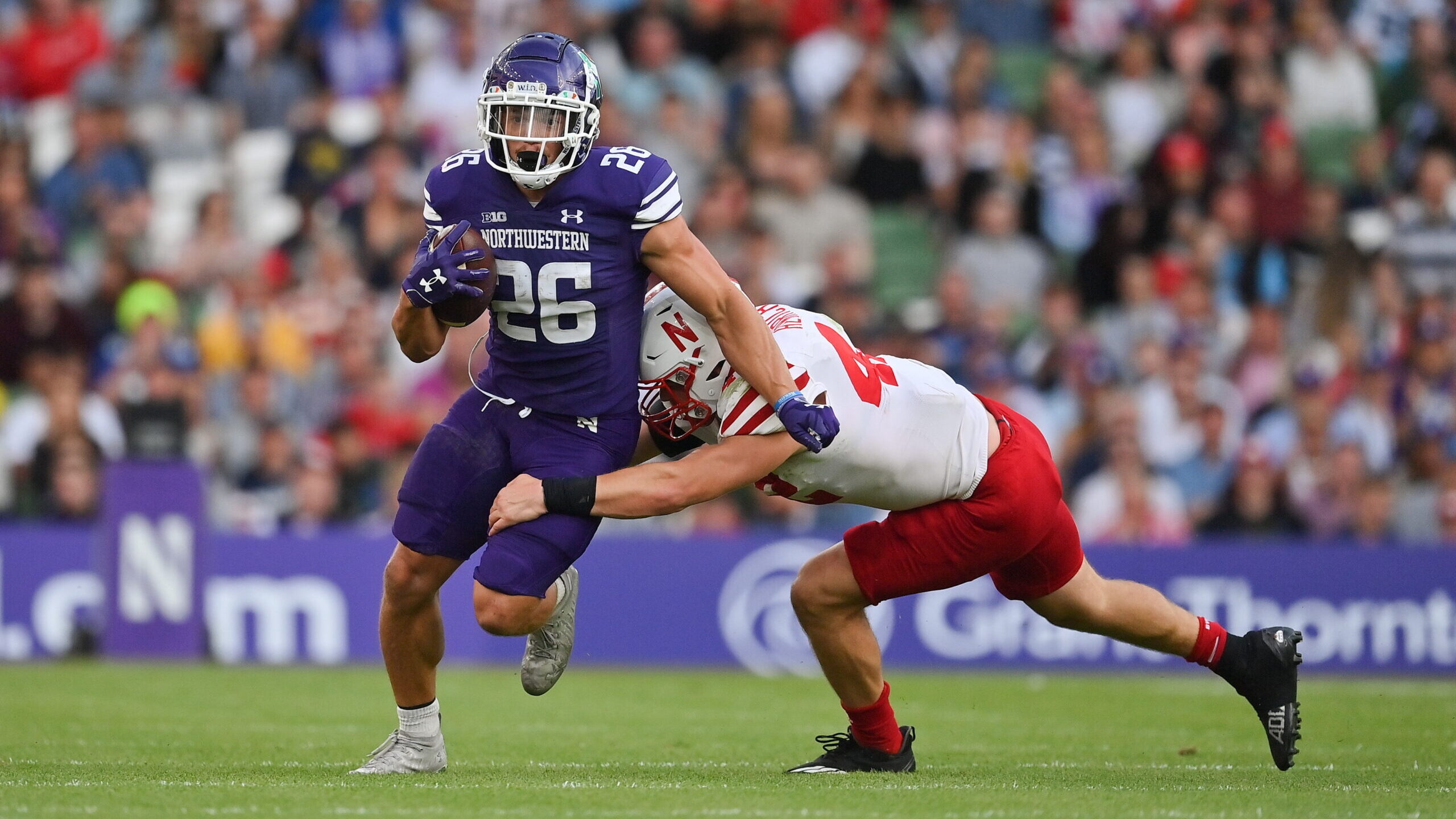
 Evan Hull, RB, Northwestern
Evan Hull, RB, Northwestern
On an offense that ranked fourth-worst in college football, Evan Hull produced as a rusher and, most notably, as a pass catcher. He's listed at 5-foot-10, 214 pounds, and gained more than 20 pounds from his high school days, when he was around 190 pounds. Hull finished with a 63% running back dominator, with a career yard receiving market share of 13%.
As a senior, Hull racked up 55 receptions and 546 yards receiving, translating to a 22% receiving-yardage market share (RecYd MS). Since 2005, Hull's RecYd MS is tied at 49th with Christian McCaffrey and Rachaad White in recent seasons.
Hull's Advanced Metrics
Hull ranked 95th in BT+MT/Att and 134th in YAC/Att amongst 200 qualified running backs. He seemed to get stuffed and hit at the line quite often, and the data aligned. Hull had the 50th-highest hit-at-the-line rate and ranked 144th in designed gap usage. It's probably related to his team context, and these metrics could look better if he played in a better offense.
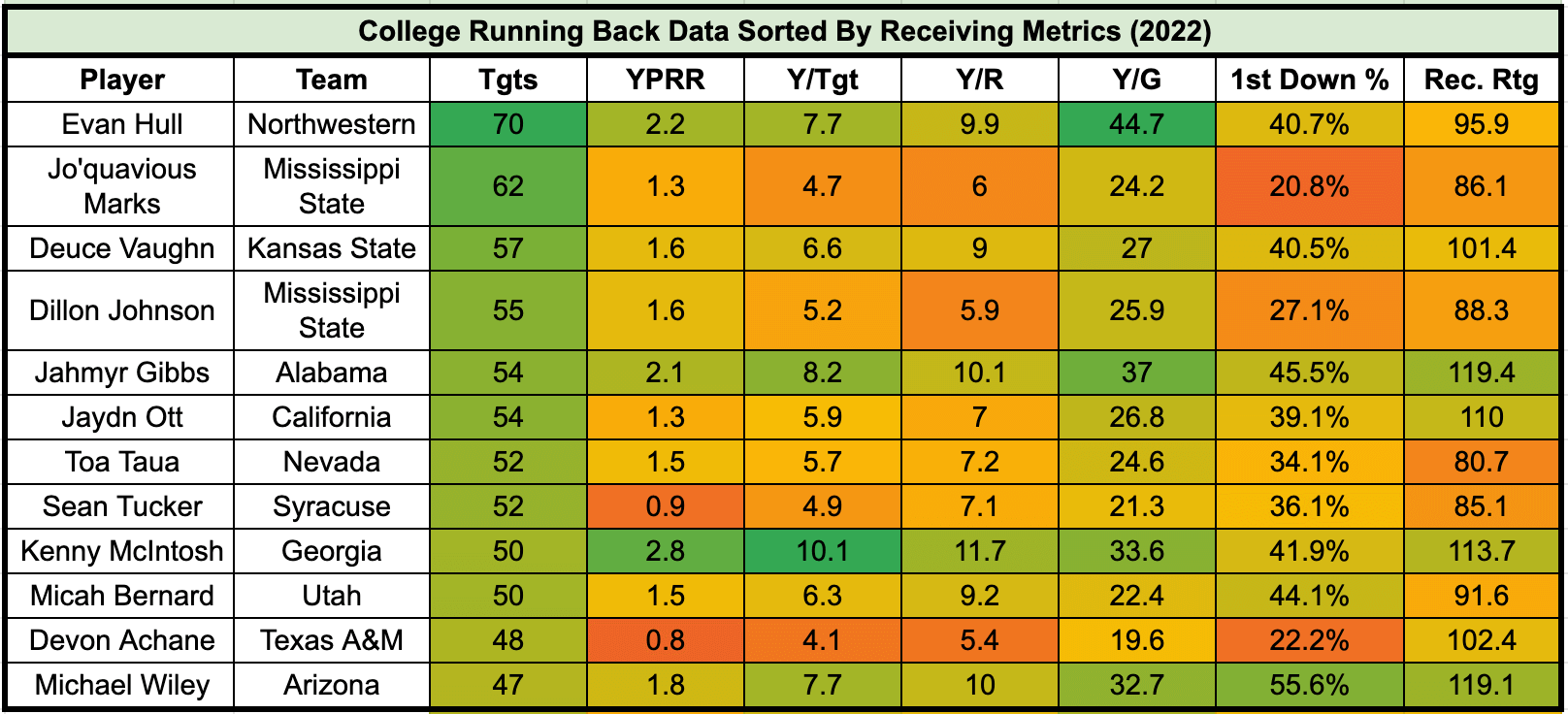
As a pass catcher, Hull ranked ninth in yards per route run (YPRR) and 18th in yards per target. His volume got him to those marks since he ranked first in targets (70) and yards receiving per game (44.7).
Hull's Early Outlook
With projected draft capital in the fourth or fifth round, Hull compares to Tyler Badie, Tyler Ervin and Justin Jackson. Badie and Jackson had some buzz at one point, but that faded quickly. He checks the volume boxes as a rusher and receiver, though concerns about his athletic measures will move the needle. At best, Hull profiles as a volume-based RB2 or a potential one-year wonder in the NFL.
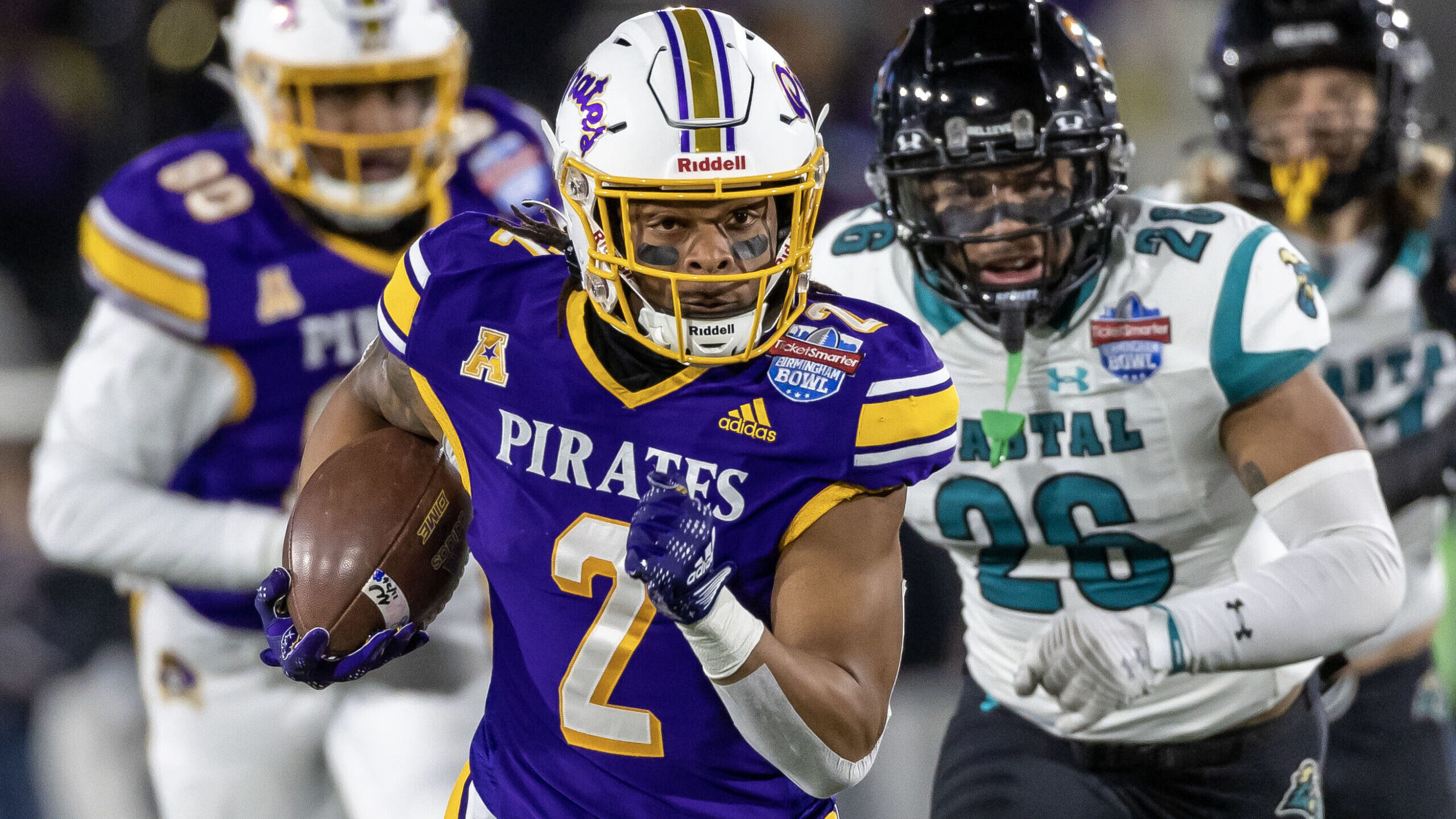
 Keaton Mitchell, RB, East Carolina
Keaton Mitchell, RB, East Carolina
Among the running back prospects invited to the NFL Combine, Keaton Mitchell tied for fifth with a running back dominator of 69% in 2022. Listed at 5-foot-9, 184 pounds, Mitchell boasted a well-rounded profile as a rusher and receiver with consecutive 8% receiving yardage market shares. He showed game-breaking speed on film coming from a non-Power-5 Conference. In high school, Mitchell reportedly ran a 4.30 40-yard dash and unsurprisingly set records as a track star.
That speed is evident when he finds an open hole, with the ability to move laterally and evade tacklers. Based on Mitchell's college production and size, he compares closely to Paul Perkins, Jamaal Charles, Marlon Mack and Javon Ringer. While Charles is the best-case scenario, Mack would be a reasonable outcome. Mitchell's projected draft slot in the fifth round raises concerns about his running back prospect profile.
Mitchell's Advanced Metrics
Mitchell's advanced metrics as a rusher jumps off the page with the 10th-best BT+MT/Att at 30.8% and No. 26 in YAC/Att. Unfortunately, Mitchell ranked 158th out of 200 qualified backs in stuff rate, indicating 19.9% of his carries went for zero or fewer yards. He also struggled to use his designed gaps only 59.7% of the time (No. 161).
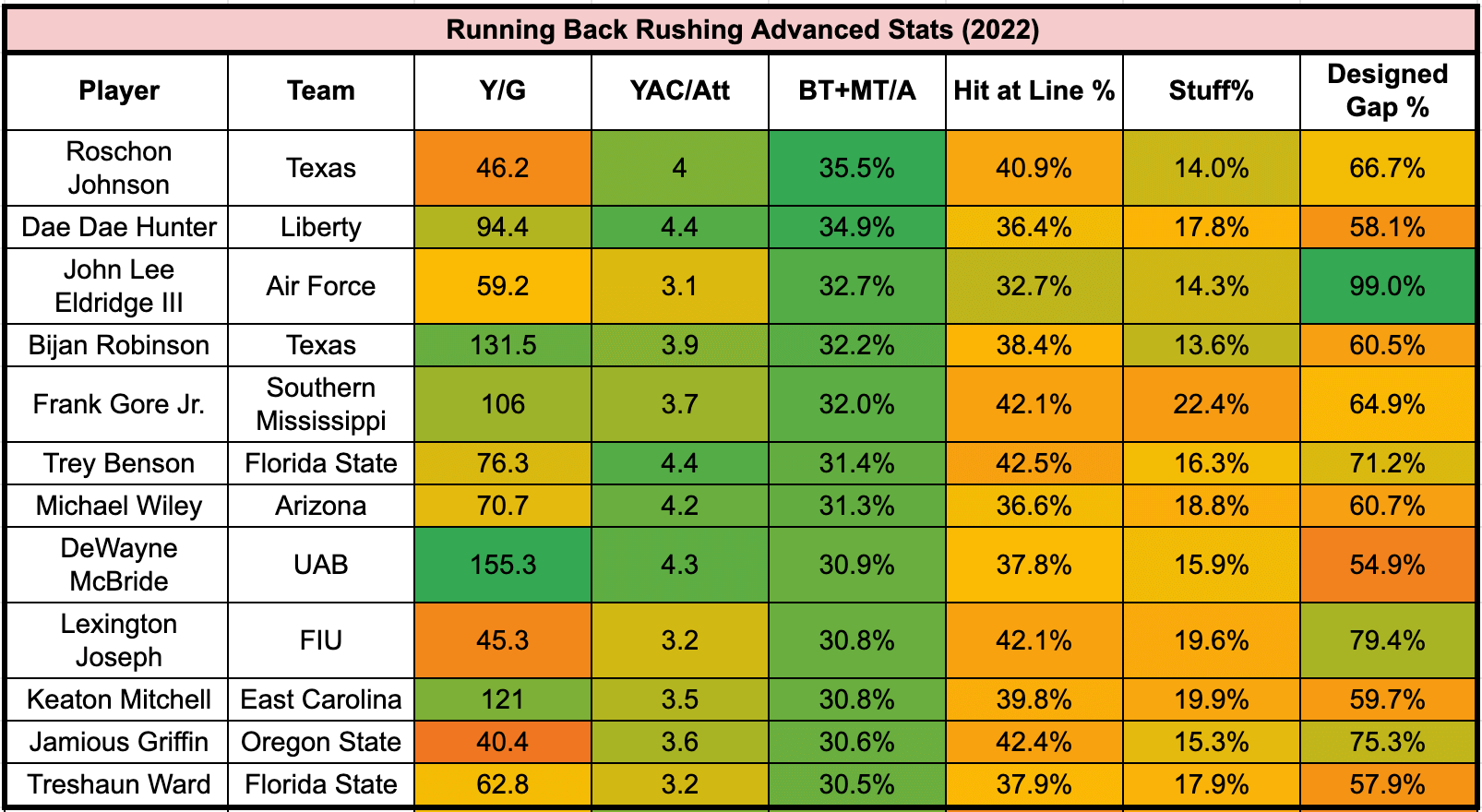
Thankfully, Mitchell produced efficiently with the third-highest yards per carry (7.2) behind John Lee Eldridge III and DeWayne McBride. Per Sports Info Solutions, Mitchell also ranked 13th in PE Per Play and 14th in EPA/Att. He had explosive plays on film, and that's evident with his seventh-best Boom Rate, meaning 16.4% of his rushes resulted in an EPA of one or higher. In other words, Mitchell's efficiency and explosiveness led to very successful plays on offense.
Mitchell's Early Outlook
When a player's production, underlying metrics and jaw-dropping plays on film align, it leads us to buy into Mitchell's running back prospect profile. While he didn't play in a Power-5 Conference, any NFL team would want an exciting weapon like Mitchell. Expect Mitchell's stock to rise after the NFL Combine, assuming he tests well.
I have a soft spot for small school players, but Charles is an upside comp, with the downside outcome being Justice Hill. There's also a dream scenario where Mitchell remains healthy, and the production might match the sleeper hype. Don't sleep on Mitchell since we find more reasons for optimism than not.
 Roschon Johnson, RB, Texas
Roschon Johnson, RB, Texas
What Roschon Johnson lacks in production, he makes up for via the juicy advanced metrics and game-breaking film. He peaked as a freshman with 649 yards rushing, 158 yards receiving and eight total touchdowns. That translated into a 37% running back dominator with a career percentage of 25. Johnson played behind Keaontay Ingram in his first year at Texas. Then, Robinson came to town, and the rest is history.
🚀Roschon Johnson might be towards the bottom of the college productivity metrics, but he ranked 1st in BT+MT/Att per @football_sis.
🔥His teammate Bijan Robinson ranked 4th in BT+MT/Att.
📈Amongst RBs with 50 carries, Johnson ranks 1st in PE Per Play, with Robinson at 3rd. pic.twitter.com/KTv0l4d9z6
— Corbin (@corbin_young21) February 19, 2023
Johnson ranked first in BT+MT/Att, with his teammate Robinson at fourth. Robinson also ranked first in PE Per Play, and Johnson ranked third, indicating we might have two running back prospects to target in all formats from Texas. It's a small sample, but Johnson's receiving metrics finished above average (No. 64) with 1.7 YPRR and 6.1 yards per target.
Johnson's Early Outlook
Johnson's projected draft capital sits in the third round and aligns with the juicy metrics. Many of the sharpest college football analysts know Johnson possesses tons of talent and upside.
Unless Johnson flops at the NFL Combine, which seems unlikely, we'll want to make him a priority in all formats. The early Underdog ADP already indicates the offseason hype for Johnson is gradually rising.
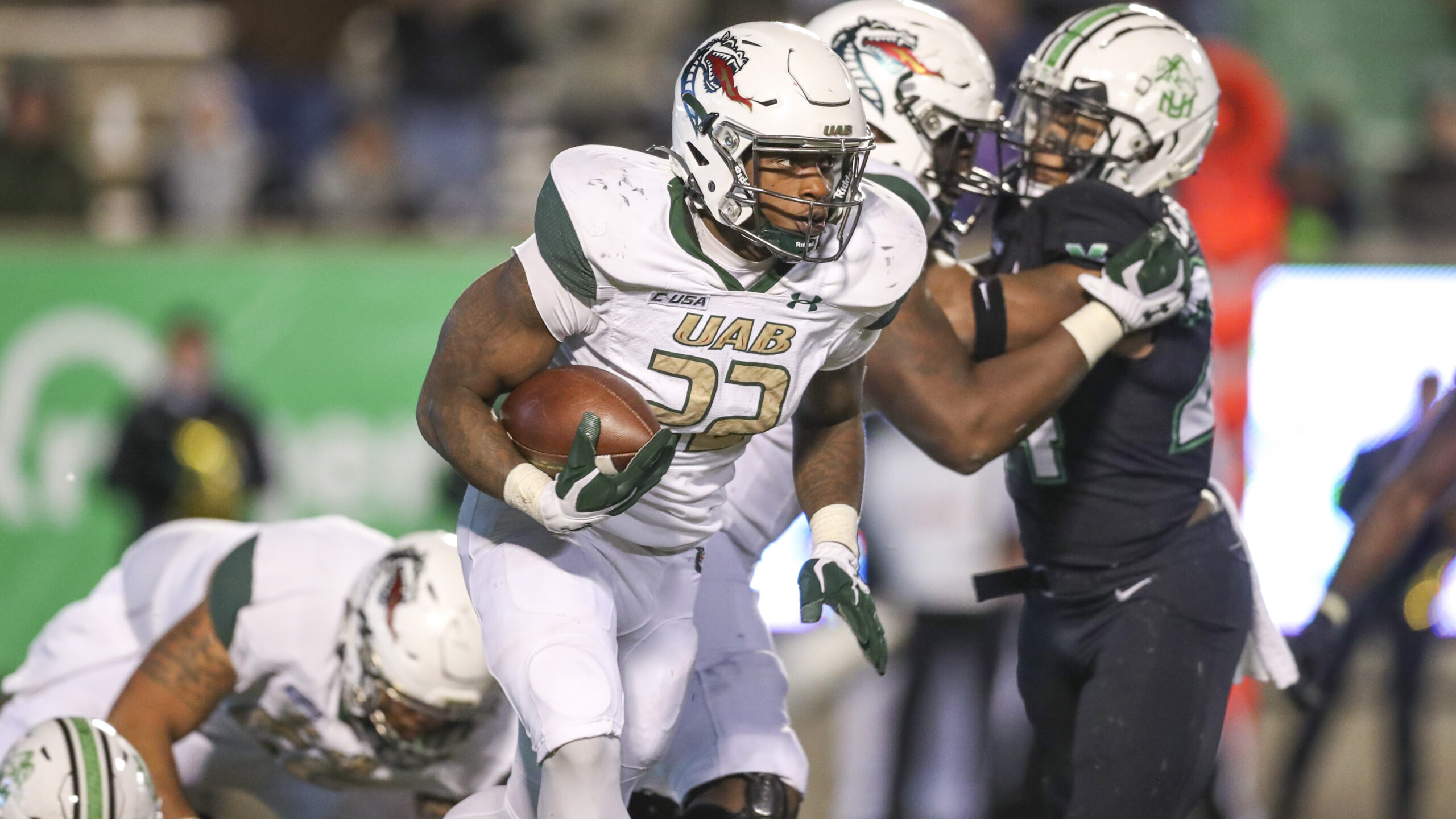
 DeWayne McBride, RB, UAB
DeWayne McBride, RB, UAB
At UAB, DeWayne McBride dominated as a rusher with a 59% rushing yardage-adjusted market share as a sophomore and 69% as a junior. McBride is listed at 5-foot-11, 215 pounds and dominated the nation in rushing production. Unfortunately, McBride only caught five receptions for 29 yards receiving in his three-year college career.
Based on his size and production, he compares closely to Benny Snell, Alex Collins and Devin Singletary. While those comparables aren't sexy, it presents the upside and downside as a potential fourth-round pick in the NFL Draft.
Touchdown Scoring Ability
I'm still weighing how much touchdowns matter in college. However, it's notable McBride scored 36 rushing touchdowns, with 32 in his sophomore and junior season. Many running backs with 36 rushing touchdowns in their college career compiled them in four seasons. McBride joined Darrell Henderson, Ronnie Hillman, Todd Gurley, Alex Collins and Charles with that rushing touchdown total in three or fewer collegiate seasons.
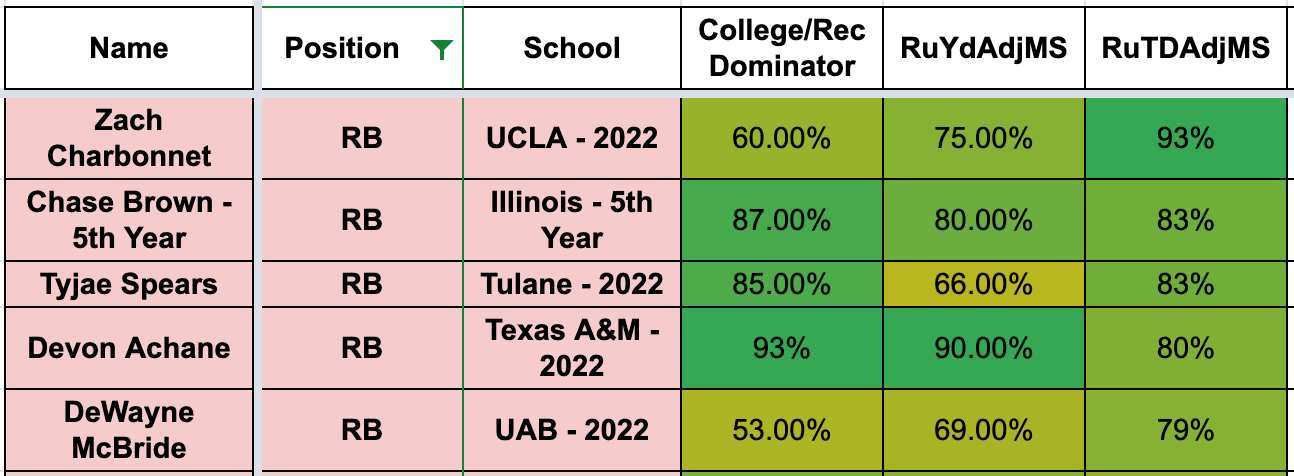
In McBride's career, that led to a rushing touchdown adjusted market share of 62% and 79% in his final college season. He had the fifth-highest touchdown share on the ground in 2022 among the running backs in the 2023 class. McBride scoring tons of touchdowns matters.
McBride's Advanced Metrics
With my novice film-watching, it's clear McBride runs tough, and the underlying metrics support that. McBride ranked fourth in YAC/Att and ninth in BT+MT/Att. While he hardly used his designed gaps (No. 187 out of 200), 15.9% of his carries went for zero or fewer yards (No. 94). That indicates he can evade tacklers and create yards after contact, regardless of his NFL landing spot.
We'll see if it shows up at the NFL Combine, but McBride displayed some agility to make jump cuts and miss tackles. He seems to have the mentality of a grinder-type back who keeps his legs moving.
McBride's Early Outlook
McBride boasted enticing metrics and game film, dominating against Conference USA schools. That said, we might want to temper expectations with McBride, even though he possesses the typical size for a running back prospect.
As nearly a zero in the receiving game, McBride comparing to Snell as an early-down grinder feels probable. McBride's touchdown-scoring ability is relevant, especially when considering the adjusted metrics. His athletic measurables will adjust the excitement level, so temper expectations with his early outlook.
WATCH: 40-Yard Dash Record in Danger?

